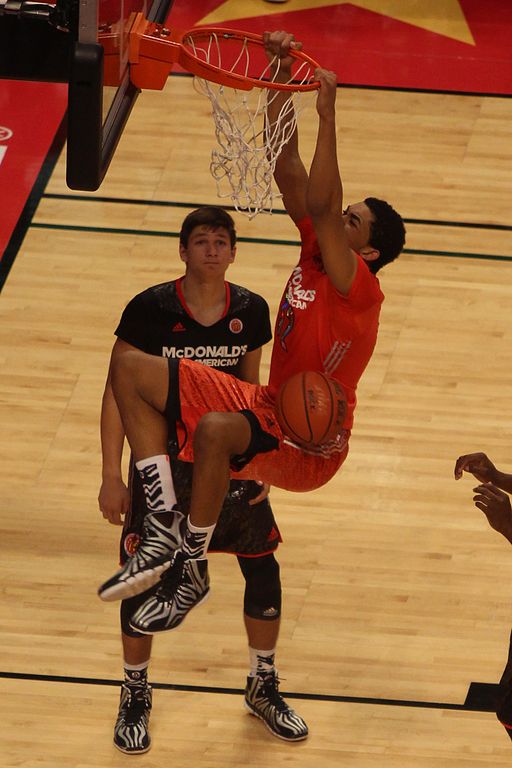by Zack Peñalva, Sports Editor
March Madness will officially draw to a close after the championship game on April 3, but for NBA teams the real madness is just beginning. Among the tournament’s millions of viewers, scores of NBA scouts have been watching closely as the 2017 draft approaches. While many of the top prospects had already established themselves, the tournament acts as one final proving ground for those looking to move up the board come draft day.
Many draft experts expected that to be the case for UCLA’s Lonzo Ball. Before the season started, Lonzo was a unanimous first-round pick, albeit a low one. Some mock drafts at the beginning of the year saw him being taken with something like the 15th (Sports Illustrated) or 16th pick (Bleacher Report and Draft Express). Ball went on to have a stellar season and average 14 points with 6.7 assists and 4.7 rebounds during the tournament. As a result, his draft stock is now at an all-time high. Bleacher Report and Draft Express now have him listed as the potential second overall pick, with BR gushing about his “unteachable vision, IQ and winning track record.”
It wouldn’t be the first time that a solid March performance and heavy media coverage pushed a player higher up the board. Ball is obviously an elite college player. Despite his often criticized shooting mechanics, he still managed to shoot 55 percent from the floor, including 41 percent from behind the arc. And while there’s no denying the stats, weaknesses like a lack of size, athleticism and ability to get to the rim may be bigger issues at the next level.
It’s not rare to see a great college player fail to make the transition to the NBA. Tyus Jones was named the Tournament’s Most Outstanding Player during Duke’s championship run in 2015. He was propelled into getting drafted in the first round by the Cleveland Cavaliers before immediately getting traded to the Minnesota Timberwolves. Since then, he’s bounced between the bench and the D-League and has yet to make it into the starting lineup a single time.
Consider as well Shabazz Napier. A consensus All-American, Napier took UConn to two National Championships. After getting selected by Charlotte in the first round of the 2014 draft, he has been traded to three different teams and spent time in the D-League. He hasn’t started an NBA game since 2014.
But sometimes the transition just takes time. Buddy Hield averaged 25 points a game and hit 45 percent of his three-pointers during his senior year at Oklahoma. After being picked sixth overall in the 2016 draft by New Orleans, the weaknesses in Hield’s game were quickly exposed. Better opposition meant he only averaged 8 points a game. Basketball Reference’s Player Efficiency Rating (PER) measures a player’s per-minute production. During his time in New Orleans, Hield managed only a meager score of 9.9, well below the league’s average of 15.
But since February, there’s been a glimmer of hope. After getting unceremoniously traded to Sacramento, Hield has gone on a tear. In his 16 games with the Kings, he’s averaged nearly 15 points and is shooting above 40 percent from three-point range. At the same time, his PER has gone up to a healthy 16.2
Lonzo’s skill set is, of course, completely different, but what he showed during the tournament isn’t enough to completely overlook his faults. March Madness provides the biggest stage for college players; the danger is the spotlight making them shine brighter than they really are. In the case of a player like Hield, he may never reach the same heights as he did during the tournament, but at least he now has shown signs of growth that keep him in the league. For Ball and the other darlings of this year’s tournament, only time will show what more they have to offer.


